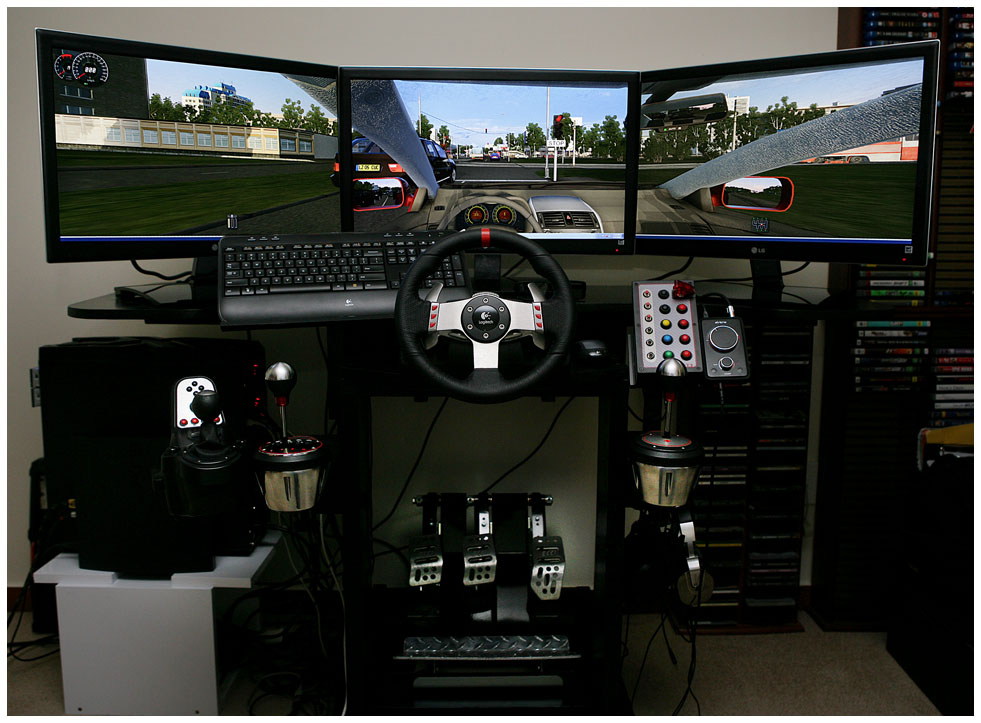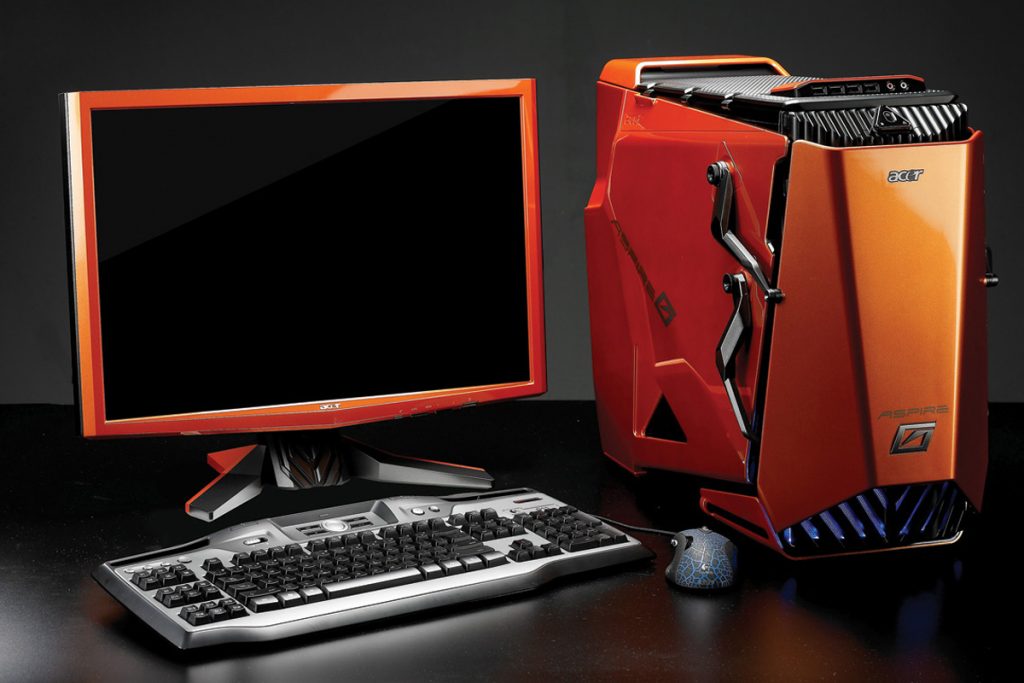Gaming PCs are specialized high-end PCs where components matter. Taking a few minutes to consider what to buy will pay dividends on the gaming grid. We walk you through the different factors to consider when you want to buy a gaming desktop or laptop.
What kind of PC will it take to run so-called “high-end 3D games?” If you have deep pockets, your answer could be a custom-built hot rod from elite boutique PC manufacturers such as Alienware, Falcon Northwest, or OriginPC. If you’re not made of money, a couple of well-informed choices will go a long way toward helping you get the right gaming rig, even if it’s from a standard PC vendor.

The heart of any system is its processor. Which one you select will have a major impact on performance—and on your wallet. At the moment, in terms of raw processing power, Intel’s six-core processors in the Core i7 family top the list. AMD goes bang for the buck with its FX processors, with up to eight cores. But you’ll see that the entry price for these top-of-the-line chips is steep—up to a thousand bucks or more.
Lesser but still high-powered CPUs such as the AMD A10 and quad-core Intel Core i7 processors can also provide the computing muscle needed for a rich gaming experience. Budget gamers should look to lower-priced (but still speedy) processors, such as the AMD A8 or the Intel Core i5, which will knock hundreds of dollars off the bottom line. While mobile processors are clocked and packaged differently, the same rules apply: go for a quad core Intel Core i7 or high end AMD A10 if your budget is large, but you can get by with quad core i5 or AMD A8 if you’re trying to save some money. As shown in our testing, spending the money on the graphics makes more sense than spending it on the processor.
What’s often overlooked is that a system’s memory is severely taxed by modern games. Try to outfit your PC with at least 8GB of RAM and budget for 16GB if you’re truly serious about freeing up this potential performance bottleneck. Faster memory (DDR3-2133 or better) also improves performance and lets you overclock your CPU with greater stability.

The most pivotal gaming decision you’ll make is which 3D graphics subsystem to use. Integrated graphics are fine for casual games like Where’s My Water and TorchLight II, but to really bring out the beast on AAA titles, you’ll want one or more discrete graphics cards. AAA titles are the games that everyone waits up for on launch night, and they’ve included games like Bioshock Infinite and Grand Theft Auto V. Today, dual, triple, and quad graphics card arrays from AMD and Nvidia reign supreme on the desktop, while single and dual GPU setups are found on gaming laptops. AMD’s CrossFireX solution consists of multiple Radeon HD processors, while Nvidia’s top draw is its 2,3, or 4-way SLI with up to four Nvidia GeForce GTX cards or GPUs.
A few words of warning, though: Equipping your system with these high-end GPUs will unavoidably boost your total bill by a couple thousand dollars. Still, multiple graphics cards not only add extra GPU power to your gaming experience, it can also enable multiple monitor setups so you can run up to six displays in AMD’s Eyefinity or Nvidia’s 3D Surround setup. You don’t have to run all the monitors together as a single screen for a single game. Multiple monitors will let you play multiple games simultaneously. You can also chat and surf while you’re playing on one of your multiple monitors. 3D with passive or active glasses is possible with the right graphics card(s) and monitor(s), but like in home theater, 3D visuals are far from a must-have feature. As far as size is concerned, you want to be using 27 or 30-inch widescreen IPS panels to do these graphics systems real justice.

For a gaming laptop, 11-, 14-, 15-, 17-, and 18-inch displays are par for the course. You can buy larger displays, but rest assured on a laptop this will jack the weight up way beyond five pounds: We’ve seen 12 pound “portables” in the gaming sector as recently as last July. Larger displays are capable of giving you higher than 1080p HD (1,920-by-1,080) resolutions, but choose wisely as QHD+ (3,200 by 1,800) will boost the final cost twice: once for the panel and second for the higher-quality graphics card to drive it.
You can still get a rich gaming experience for thousands less by using a single but robust 1GB to 2GB video card such as a midlevel AMD Radeon or the Nvidia GeForce GT Series card. If you’re less concerned about turning up all the eye candy found on games—anti-aliasing and esoteric lighting effects, for example—then last year’s cards and GPUs will still give you plenty of oomph for a lot less.

SSDs are a hot topic, since the prices have come down dramatically over the past few years. SSDs speed up boot time, wake from sleep time, game launch time, level loading time, basically any time you’re sitting there watching a progress bar fill up. Go ahead and get a gaming laptop or desktop with a SSD, but make sure you configure correctly. A small SSD (128GB) with a large data (spinning) hard drive (500GB to 1TB) is a good start for gamers that also download the occasional video from the Internet. Gargantuan SSDs are available (512GB or more capacity), but choosing one will increase the purchase price of your gaming rig exponentially. Go with the smaller SSD if you like to rebuild your OS and driver sets after each new AAA title release, otherwise opt for the larger SSD or large hard drive as your C: drive if you like to keep games around for a while.
But don’t stop at internal components. A couple of extras can really do wonders for your gaming experience. I recommend that you trick out your machine with good pair of noise-cancelling headphones (to drown out the fan noise). Keyboards, mice, and specialized controllers round out your gaming choices.
Have fun, and game on!
via www.pcmag.com



